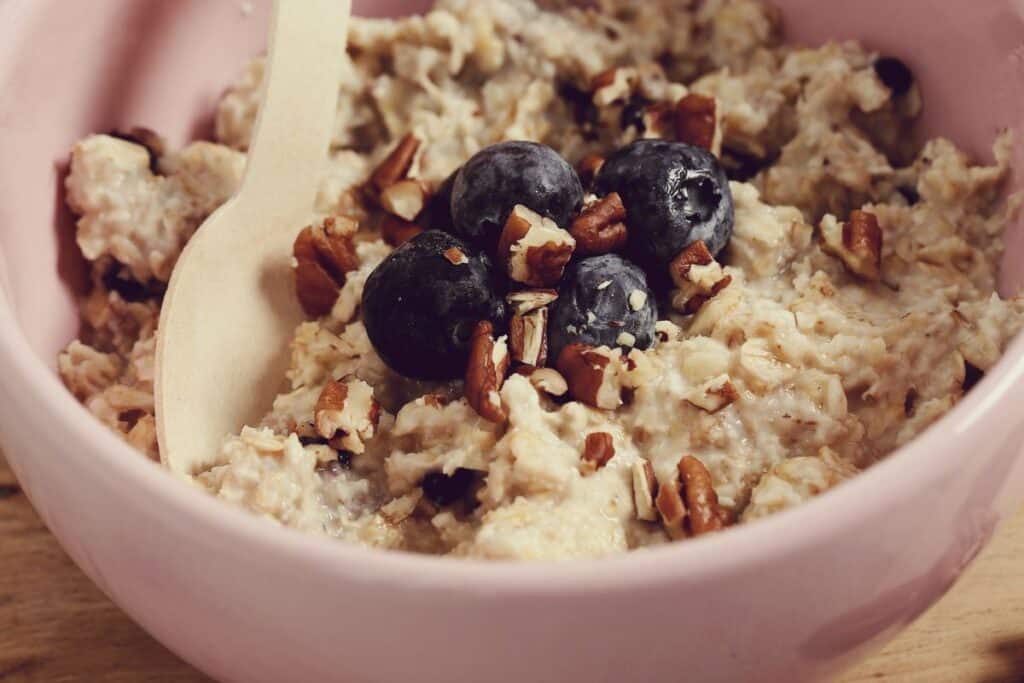Understanding the Low FODMAP Diet: A Guide for IBS Relief

By Reva Schlanger MS, RD, CDN
Have you ever heard a friend say they were going on a “FODMAP diet”? FODMAP is an acronym for certain sugar that can cause intestinal distress so when people are on a FODMAP diet, it means they are choosing from foods that are low in FODMAPs. This diet has been helpful for those suffering from irritable bowel disease (IBS) and/or small intestinal bacterial overgrowth (SIBO) as it can help people figure out which foods are irritants and which foods reduce symptoms.
It is important to note that the low FODMAP diet is meant as a temporary eating plan as it is very restrictive. The goal is to find out which foods increase gastrointestinal distress and try to eliminate those from a person’s overall diet. The initial process is very restrictive, so it is important to seek guidance from both a medical professional as well as a registered dietitian.
What are FODMAPs?
FODMAP stands for fermentable oligosaccharides, disaccharides, monosaccharides, and polyols, which are short-chain carbohydrates (sugars) that the small intestine absorbs poorly. This causes the small intestine to draw in extra water to help move the FODMAPs to the large intestine. There, the bacteria living in your colon ferment these sugars, turning them into gas and chemicals. This stretches the walls of the colon, causing abdominal bloating, pain, distention, cramping and/or changes in bowel habits. FODMAPS are not unhealthy or harmful but may exacerbate GI symptoms in those with sensitive GI tracts.
Are FODMAPs harmful for everyone?
Definitely not! Our gastrointestinal tracts are designed to process some foods that our bodies cannot fully absorb. An example of this would be dietary fiber which has an important place in digestive health and has shown to help reduce cholesterol. Feeding the bacteria in our gut is important to have a healthy microbiome. Some people, however, have more sensitive guts and can experience a level of indigestion from these foods that can impact daily living. For those people, the byproducts of fermentation can cause unpleasant symptoms like bloating, flatulence, abdominal pain, and distention. This when a low FODMAP diet may be recommended.
How does it work?
The low FODMAP diet is a three-step elimination diet. There is the elimination phase (step one) where you would stop eating any foods high in FODMAPs. The second step is the reintroduction phase where you start to slowly reincorporate the previously eliminated foods to see which ones are problematic. Finally, step three is the maintenance phase. Once you can identify the foods that cause symptoms, tyou can avoid or limit them from your daily eating habits.
It is recommended to have at least two weeks and no more than six weeks of the elimination phase (usually is 2-4 weeks). It can take time for symptoms to subside so one week would likely not be enough time for this phase to work. Remember, this phase is not meant to be permanent as it is extremely restrictive. If symptoms are significantly improved with the elimination phase, patients will then start the reintroduction phase, where groups of FODMAPs are added back one at a time, monitoring for a reoccurrence of symptoms.
The reintroduction and maintenance phase can vary as it is very individualized. During the reintroduction phase, you will stay on the low FODMAP diet while starting to reintroduce a high FODMAP food from each FODMAP category, one at a time. It will take a few days to test out each food and increase the quantities, to find the tolerance threshold. Between each test is a “reset” back on the elimination phase to help avoid any crossover effects.
Many people can feel overwhelmed and stressed with all the “Do’s and Don’ts” of a low FODMAP diet. It can be beneficial to work with an experienced dietitian during the elimination and reintroduction phases. Once you find out which foods work and don’t work, plan a more sustainable and nutrition meal plan with your dietitian for the maintenance phase.
What can I eat?
Foods that trigger symptoms vary from person to person. To ease IBS and SIBO symptoms, it’s essential to avoid all high FODMAP foods that aggravate the gut. This includes*:
- Dairy products (like milk, yogurt, some cheeses, and ice cream)
- Beans and lentils
- Wheat-based products such as cereal, bread, and crackers
- Some vegetables including artichokes, asparagus, onions, and garlic
- Some fruits including apples, pears, peaches, and cherries
Instead, base your meals around some low FODMAP foods such as:
- Almond or hemp milk
- Eggs and meat
- Grains like rice, quinoa, and oats
- Certain cheeses like brie, cheddar, and feta
- Vegetables like eggplant, potatoes, cucumbers, tomatoes, and zucchini
- Fruits like grapes, strawberries, blueberries, pineapples, and oranges
Portion sizes do matter when it comes to FODMAPs, as certain foods have a specific serving size in which they would be considered high vs low in FODMAP. Remember to read the labels of packaged foods to ensure they do not have any added high FODMAP ingredients (ex: high fructose corn syrup, onion, garlic, wheat, etc.)
*To get a full list of low and high FODMAP foods, ask a registered dietitian and medical doctor.
Takeaway
There is a lot of research on the effectiveness of the low FODMAP diet for IBS and the verdict is still ongoing. While some have found the low FODMAP diet helpful and noticed a reduction in symptoms, this diet may not be effective or appropriate for everyone with IBS or other gastrointestinal issues.
Anyone interested in starting a low FODMAP diet should talk with their doctor and dietitian before starting. It is important to understand the benefits and risks, as this diet is not suitable for everyone. It is very rigid and not meant for long term. A medical team will work on specific plan that will manage symptoms while maintaining a balanced diet.
References:
- Wang J, Yang P, Zhang L, Hou X. A Low-FODMAP Diet Improves the Global Symptoms and Bowel Habits of Adult IBS Patients: A Systematic Review and Meta-Analysis. Front Nutr. 2021;8:683191. Published 2021 Aug 19. doi:10.3389/fnut.2021.683191
- Bellini M, Tonarelli S, Nagy AG, et al. Low FODMAP Diet: Evidence, Doubts, and Hopes. Nutrients. 2020;12(1):148. Published 2020 Jan 4. doi:10.3390/nu12010148
- Altobelli E, Del Negro V, Angeletti PM, Latella G. Low-FODMAP Diet Improves Irritable Bowel Syndrome Symptoms: A Meta-Analysis. Nutrients. 2017;9(9):940. Published 2017 Aug 26. doi:10.3390/nu9090940
- Van Lanen AS, de Bree A, Greyling A. Efficacy of a low-FODMAP diet in adult irritable bowel syndrome: a systematic review and meta-analysis [published correction appears in Eur J Nutr. 2021 Jun 28;:]. Eur J Nutr. 2021;60(6):3505-3522. doi:10.1007/s00394-020-02473-0
- Hill P, Muir JG, Gibson PR. Controversies and Recent Developments of the Low-FODMAP Diet. Gastroenterol Hepatol (N Y). 2017;13(1):36-45.







